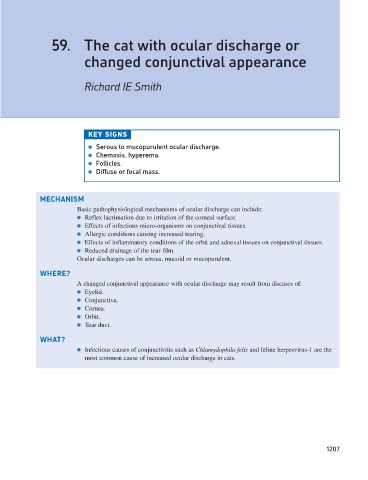Page 1215 - Problem-Based Feline Medicine
P. 1215
59. The cat with ocular discharge or
changed conjunctival appearance
Richard IE Smith
KEY SIGNS
● Serous to mucopurulent ocular discharge.
● Chemosis, hyperema.
● Follicles.
● Diffuse or focal mass.
MECHANISM
Basic pathophysiological mechanisms of ocular discharge can include:
● Reflex lacrimation due to irritation of the corneal surface.
● Effects of infectious micro-organisms on conjunctival tissues.
● Allergic conditions causing increased tearing.
● Effects of inflammatory conditions of the orbit and adnexal tissues on conjunctival tissues.
● Reduced drainage of the tear film.
Ocular discharges can be serous, mucoid or mucopurulent.
WHERE?
A changed conjunctival appearance with ocular discharge may result from diseases of:
● Eyelid.
● Conjunctiva.
● Cornea.
● Orbit.
● Tear duct.
WHAT?
● Infectious causes of conjunctivitis such as Chlamydophila felis and feline herpesvirus-1 are the
most common cause of increased ocular discharge in cats.
1207

